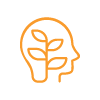What is Physiotherapy and How it Supports Long-Term Health and Wellness
March 12, 2025

Physiotherapy restores movement and function in individuals affected by injuries, illnesses, or disabilities. It also reduces the risk of future injuries or health conditions. As a healthcare profession, physiotherapy focuses on assessing, diagnosing, treating, and preventing various medical conditions.
What Can Physiotherapy Help With
Physiotherapy can help with a variety of conditions, including sports injuries, neck, back, knee, and hip pain, carpal tunnel syndrome, tendinopathy (like tendinitis), rotator cuff tears, ACL injuries, TMJ disorders, concussions, strokes, spinal cord injuries, and traumatic brain injuries. It also supports chronic conditions such as COPD, cerebral palsy, multiple sclerosis (MS), muscular dystrophy, Parkinson’s disease, and cystic fibrosis, improving mobility and quality of life.
Types
Physiotherapy uses various techniques and approaches to enhance the overall physical well-being of those laid low with a movement disorder, injury, or disease. Following the assessment of the physical condition, the physiotherapist may work out a treatment plan taking into consideration one or a mix of the following therapies:
Massage and Manipulation
This involves manipulating the body’s soft tissues by using the movement of the hands. It is considered one of the most effective forms of physiotherapy and is suitable for people of all ages. It is used for:
- Improving blood circulation in the body
- Enhancing the movement of different parts of the body.
- Relieving pain & helping the body relax.
This technique is best for treating pain, aches, and movement disorders in the neck, shoulder, and back area, as well as headaches and stress-related issues.
Movement and Exercises
A comprehensive exercise is a vital part of physiotherapy that people are often recommended to undergo while recovering from an injury or looking to boost their balance or speed of movement. As per the diagnosis, specific exercises are incorporated within the treatment concept to help you recover safely. These exercises focus on strengthening muscles and joints, enhancing control, increasing range of motion, and preventing future or recurring injuries.
For example, a combination of gentle exercises like walking or swimming is also recommended for someone recovering from an injury that will have affected their overall mobility. Similarly, for someone who must have had a stroke or an attack and faces paralysis or difficulty moving a limb, exercises targeting that specific area would be recommended.
Energy-based Therapy
It is also called electrotherapy, and it uses different types of energies, such as currents or impulses, to stimulate the nervous system. For example, the electric impulses make the muscles tighten, which helps ease pain and stress in the body, thereby promoting effective healing.
Energy-based therapies are wholly pain-free, and one may experience some tingling sensations while undergoing them. Their types include:
- The transcutaneous electrical nerve stimulation (TENS) machine delivers an electric current to stop your nerves from sending pain signals to your brain and encourage the release of endorphins.
- Ultrasound – High-frequency sound waves treat deep tissue injuries by stimulating blood circulation and cell activity. This treatment can help reduce pain and spasms and speed up the healing process.
- Laser therapy – It helps take the edge off the pain and muscle spasms. It is thought to be most effective in treating tendon conditions.
- The shortwave diathermy – An electromagnetic field generates heat within your body’s tissues. This can help minimize inflammation, strengthen tissues, and reduce pain.
Hydrotherapy
It is a form of therapy carried out in the water. The water temperature is kept between warm and hot to assist the muscles in relaxing and relieving pain. A unique hydrotherapy bath is prepared in which a load of water pushes against your body while you’re floating or performing exercises. It helps stimulate proper blood flow and reduce pain.
Pediatric Physiotherapy
It is the branch of physiotherapy that aims at helping children and children with developmental issues and physical problems. For example, a toddler may face movement difficulty because of a spread of conditions, including spastic paralysis, development delay, down syndrome, neuromuscular illness, and acquired brain injury.
After the diagnosis of the condition, a proper assessment of the issue and the long-term impact of the treatment are conducted. Finally, a customized plan is devised and incorporated into the child’s everyday activities. Parents are encouraged to participate in the program and help their children make the most of their growth years, reach their potential, and transition into adult life easily.
Neurological Physical Therapy
Physical exercises can significantly positively impact conditions associated with the medulla spinalis or those who have developed Alzheimer’s disease, Parkinson’s disease, or other brain injuries. By performing therapeutic exercises regularly, you can reduce the effects of nervous disorder from spreading further within the system and improve your body’s movement and coordination.
Cardiovascular Physical Therapy
If one is facing problems with the guts or circulation of blood and oxygen within the system, cardiopulmonary physiotherapy can help prevent problems like heart attack and pulmonary fibrosis, build strength in crucial muscles, and improve endurance over the long haul.
The Importance and Benefits of Physiotherapy
Regular physiotherapy can relieve people of all ages suffering from ailments, injuries, or disorders. With the help of high-quality physiotherapy, you’ll be able to restore your pre-pain physical condition and fitness levels and lead the way to an active and healthy life. Some of the best-known additional perks of physiotherapy include:
- Pain Relief: Multiple aches and pains within the body might be due to several reasons. For example, an ankle injury while playing basketball or chronic lower back pain because sitting for long hours at work needs immediate attention if the pain affects your everyday routine and activities. In addition, regular physiotherapy sessions help mitigate or perhaps alleviate the pain and reduce dependency on painkillers that might be expensive or prove harmful in the long run.
- Managing Women’s Health: Physiotherapists provide specialized care for women’s health concerns, including pregnancy, postpartum care, and conditions like breast cancer, fibromyalgia, and incontinence.
- Better Spine Health: Chiropractic treatments provided by physiotherapists can help address spinal and musculoskeletal issues, improving overall spine health.
- Thwarting Surgery: While surgery may be unavoidable in some instances, physiotherapy can help eliminate the requirement of going through surgery, ultimately. Using a type of treatment that includes a combination of exercises and therapies assists in the elimination of pain from the root, healing injured tissues, and facilitating easy and smooth mobility over time. In addition, if you have already undergone surgery, physiotherapy can help you recuperate and recover faster.
- Recovery from Lung and Heart Diseases: Physiotherapy supports recovery for individuals with heart and lung conditions, including breathing exercises that improve lung function and overall health.
- Stroke Recovery: Physiotherapy aids in restoring mobility and strength to weakened muscles, helping individuals regain better movement and gait post-stroke.
- Improved Mobility & Balance: Those recovering from surgery or an injury can take time to get back on their feet. Physiotherapy can help the body regains muscle strength and improve coordination.
- Cope with age-related issues: With age, people tend to develop bones, joints, or muscles related complications like osteoporosis and arthritis. Regular physiotherapy can be advantageous to tackle these everyday aches and pains. It can also be opted for if an individual has had a knee or hip replacement surgery and wants to alleviate pain and recover faster.
- Avoid dependency on medicines: While painkillers may provide instant relief from pain, their effect on your kidneys and liver can be fatal in the long run. Therefore, physiotherapy is considered a safe and more effective alternative to pain control medication to address long-term pain issues.
Conclusion
Physiotherapy helps individuals restore mobility, relieve pain, and improve their quality of life following injuries, illnesses, or chronic conditions. Physiotherapy provides personalized care using various methods, including manual therapy, specific exercises, energy-based treatments, and hydrotherapy, tailored to each patient’s individual needs. Beyond recovery, it also focuses on preventing future injuries and managing age-related or neurological issues. Whether for rehabilitation, pain management, or enhancing physical performance, physiotherapy provides a safe, effective, and holistic approach to maintaining optimal health and mobility, empowering individuals to lead active, independent lives.







